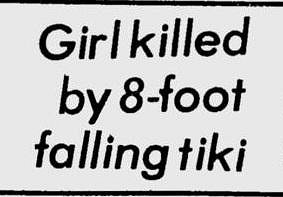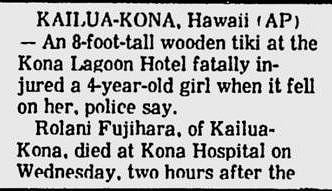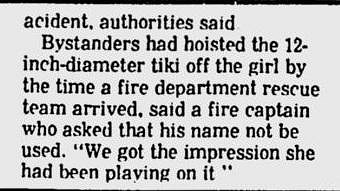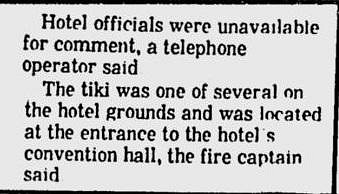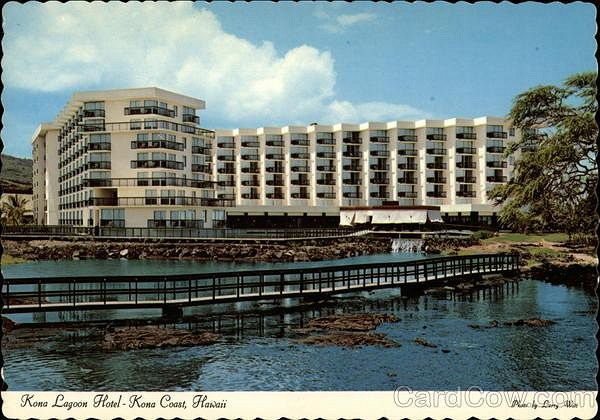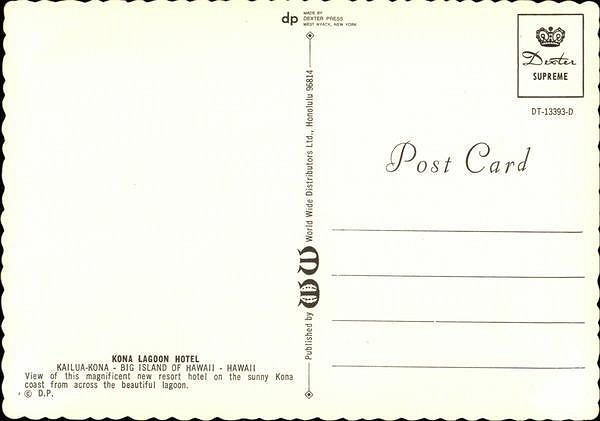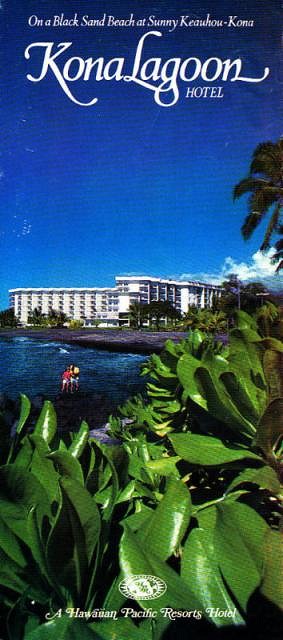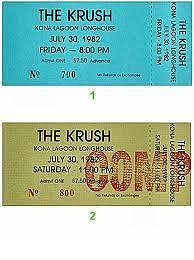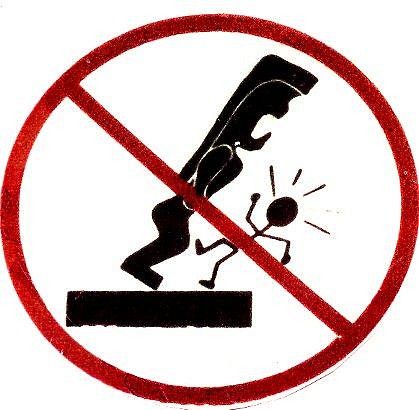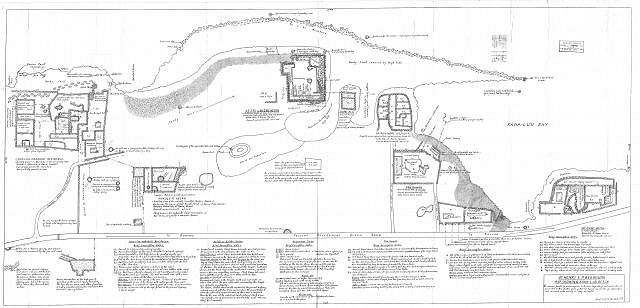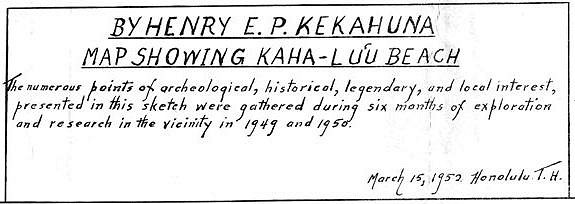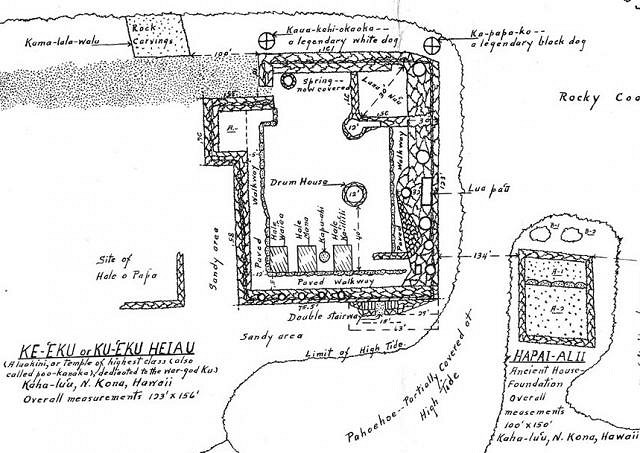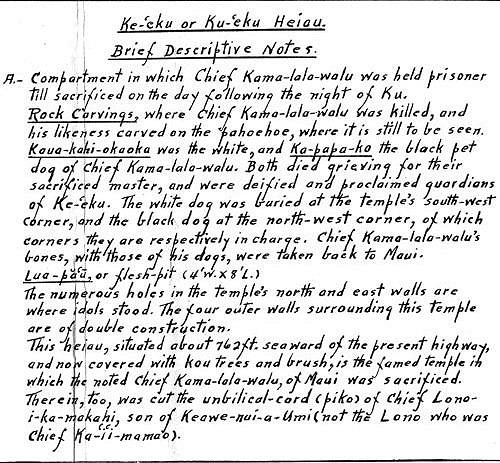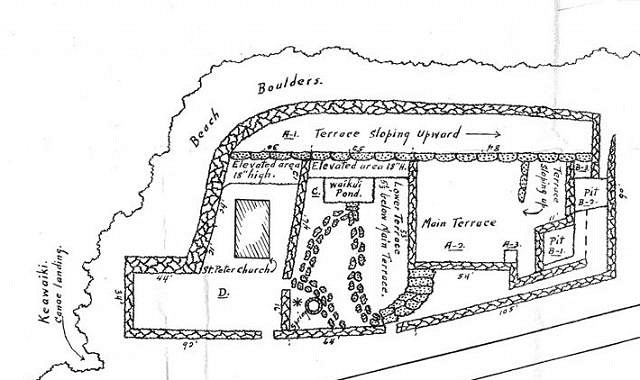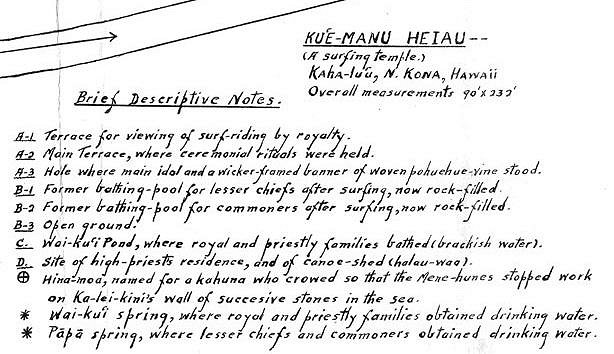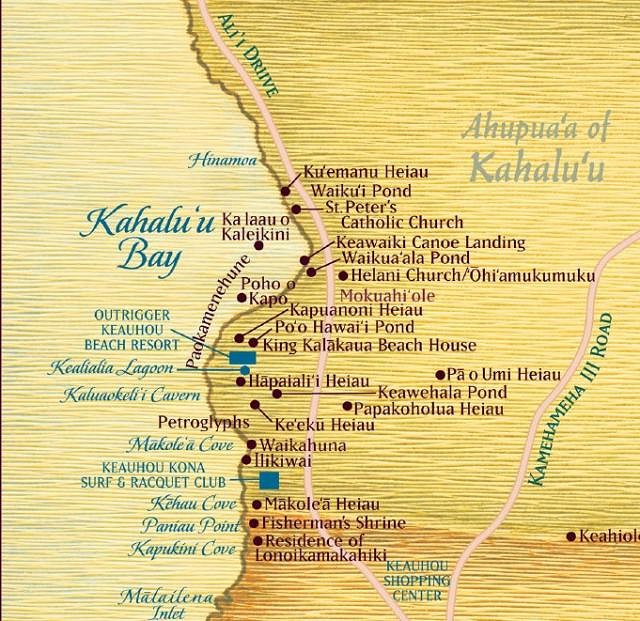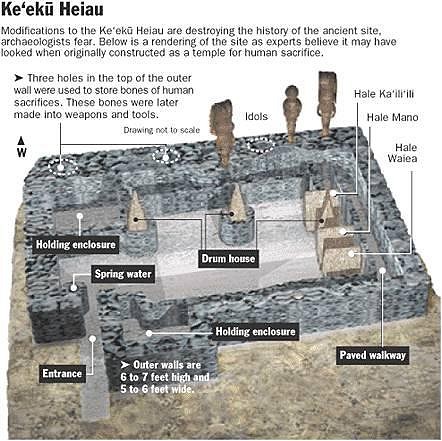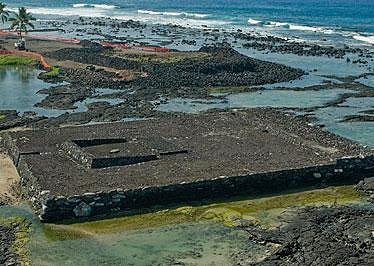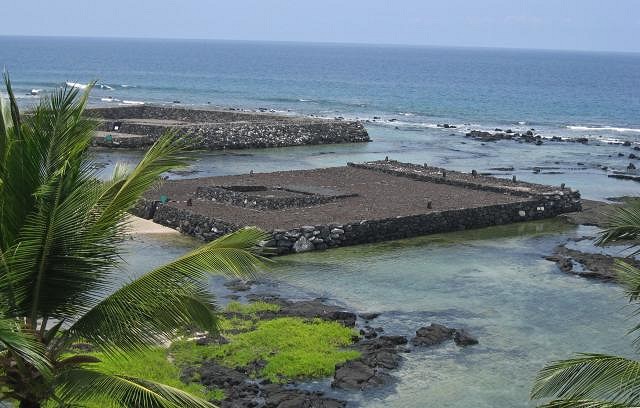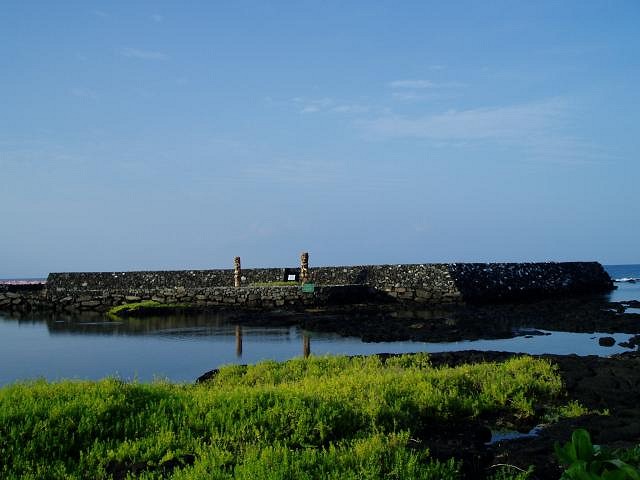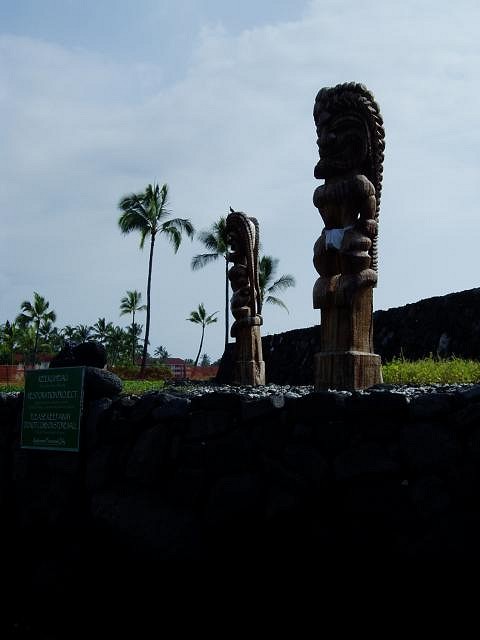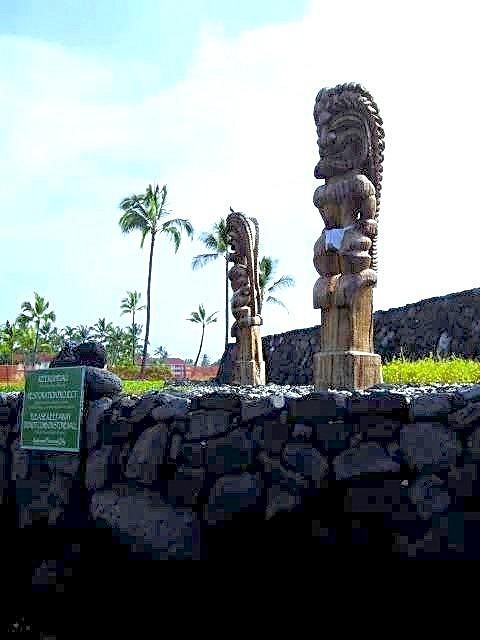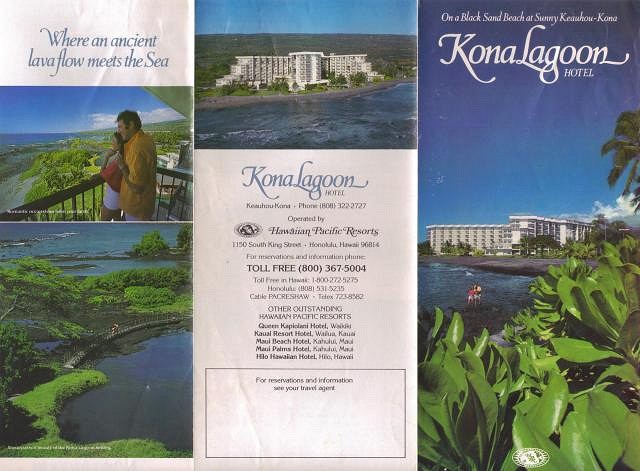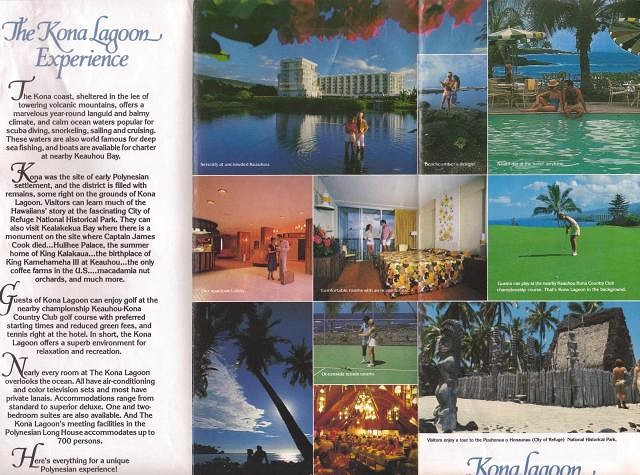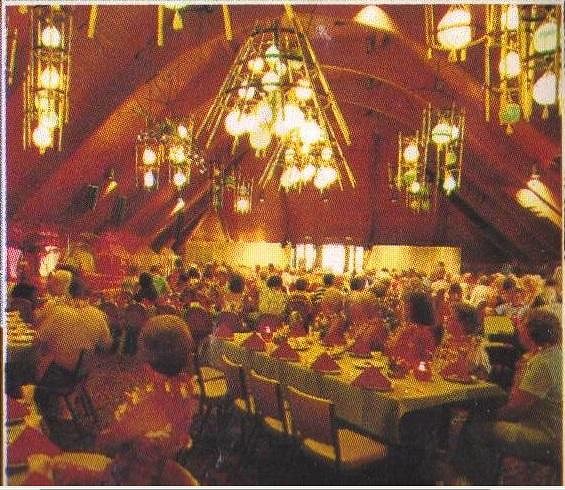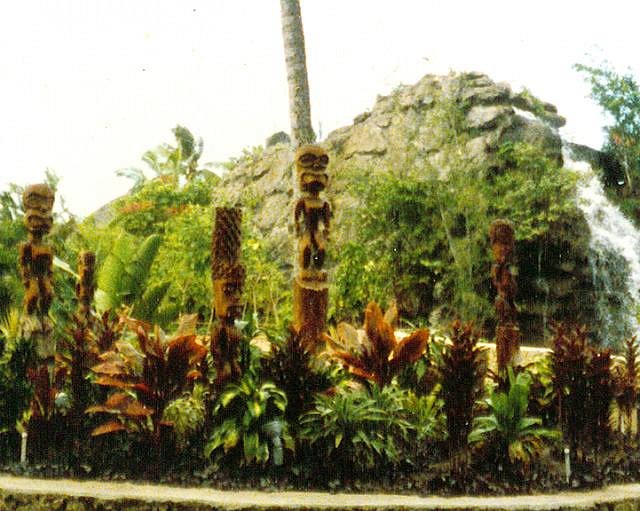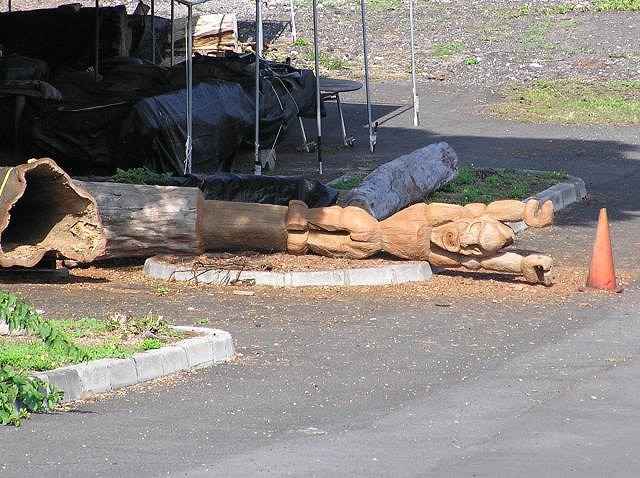Tiki Central / General Tiki
From the news archives 25 years ago: Tiki kills
Pages: 1 11 replies
|
T

TikiTomD
Posted
posted
on
Wed, Dec 14, 2011 2:15 PM
This article from the Google News archives introduced me to the melancholy saga of the now extinct Kona Lagoon Hotel (http://news.google.com/newspapers?nid=oufuJXaDW1QC&dat=19860821&printsec=frontpage&hl=en, page 6)... Williamson Daily News August 21, 1986 The Kona Lagoon Hotel opened in 1974 on a site considered to be sacred by the native Hawaiians. It closed in 1988 after its owner, Kona Hawaiian Associates, went bankrupt and the lease was sold to a Japanese business with plans to renovate and combine it into a single resort with neighboring Keauhou Beach Hotel. Those plans went awry and Azabu USA, the Japanese business that bought the lease, abandoned the property in 1995. It was finally torn down in 2004, with plans to restore the culturally-significant sites on the property. The grounds of the hotel include the remains of three heiau or ancient Hawaiian temples, as well as petroglyphs. Two of these heiau were luakini, temples of human sacrifice. The hotel itself was built upon the dwelling place of supernatural twin sisters, For more reading, see: The Honolulu Advertiser October 14, 2002 ”Kona Lagoon Hotel may be torn down” Honolulu Star-Bulletin June 23, 2004 ”Demolition of Big Isle’s The Harry Helms Blog April 2, 2009 ”The Haunted Heiaus Of Kailua-Kona, Hawaii” Big Island Tourist Dotcom ”Return to the Surf” Here’s a Kona Lagoon Hotel postcard image from Cardcow.com...
And here’s a 1983 Kona Lagoon Hotel brochure for sale on eBay...
-Tom |
|
S
Swanky
Posted
posted
on
Thu, Dec 15, 2011 9:30 AM
Maybe by 1988, that little girl's family "owned" the Kona... |
|
B
bigbrotiki
Posted
posted
on
Thu, Dec 15, 2011 11:21 AM
Fascinating! And now, some pics of the Tikis on the grounds, please! I coud not find any, but these tickets to a concert at the hotel have taken on a tragic meaning:
And then there is this actual sign from the Kanaapali Hotel :
|
|
T

TikiTomD
Posted
posted
on
Fri, Dec 16, 2011 7:52 AM
Swanky, at the very least, the hotel’s insurance premiums probably ballooned, cutting into a marginal income. Sven, that falling Tiki warning sign is a gem. Wonder if that was the direct result of the incident in this thread? Pat and I stayed at the Ka`anapali Beach Hotel on Maui in July of 2001. We loved the place; the hotel staff did their best to acquaint guests with Hawaiian culture, art and activities. As to photos of Tikis at the Kona Lagoon Hotel, I’m hoping that our TC Ohana in Hawaii can help, as I’ve not been successful thus far in finding any. This 1952 map of Kahalu`u Beach by Henry E.P. Kekahuna at the Bishop Museum was based on field work conducted in 1949 and 1950, before development. It shows an amazing concentration of archaeologically and historically-significant sites on that area of the Big Island’s Kona Coast...
The map details the pre-Kona Lagoon Hotel layout of the Ke`eku Heiau, as well as the tale of the Maui chief’s sacrifice. For dog lovers, there’s kind of a Greyfriars Bobby story here, the Hawaiian version...
Never knew there was such a thing, but Ku`emanu Heiau, a temple of surfing, was sited at the south end of the beach...
The property and all improvements of the Kona Lagoon Hotel reverted to its leaseholder on abandonment in 1995, Kamehameha Schools / Bishop Estate (estate of Hawaiian Princess Bernice Pauahi Bishop). The for-profit arm of the leaseholder, Kamehameha Investment Corporation (KIC), took over and eventually also bought the adjoining resort to the south, Keauhou Beach Hotel. KIC decided to demolish the Kona Lagoon Hotel and restore the culturally-significant sites on the properties, but keep the Keauhou Beach Hotel intact, reselling it. That hotel is now known as the Outrigger Keauhou Beach Resort. A KIC brochure from 2008 overviews the project and provides additional details on the historic sites. This map from the brochure shows the concentration of those sites...
A graphic rendering of what the Ke`eku Heiau may have originally looked like was provided in The Honolulu Advertiser, “Heiau's history in jeopardy,” September 15, 2002...
Here’s a photo showing Hapaiali
Here’s a later photo by W. Nowicki taken on December 28, 2009 showing how the reconstruction advanced...
-Tom |
|
B
bigbrotiki
Posted
posted
on
Sat, Dec 17, 2011 2:56 PM
Fantastic research, Tom. It is good to know that so much knowledge of these sites and their purposes still exists. And it shows how little say the native Hawaiian movement had. Good to see that some of the heiau were reconstructed . |
|
AT

Alii Tiki
Posted
posted
on
Sat, Dec 17, 2011 3:59 PM
A recent look at Ke`eku Heiau - so far I haven't been able to come up with any archival images of any statues from the Kona Lagoon era.
and a closer view, accessing this area is NOT suggested.
|
|
PR
Phillip Roberts
Posted
posted
on
Sat, Dec 17, 2011 4:07 PM
Aloha,
...and why would you say that Sven? It seems pretty clear that the "Tiki Age" in Hawaii started later than the mainland, and the decline started later as well. |
|
B
bigbrotiki
Posted
posted
on
Sat, Dec 17, 2011 5:10 PM
For me, the Tiki Modern age in Hawaii started with the Tahitian Lanai, Canlis and the work of Brownlee and Pete Wimberly in the 60s, and petered out sometime in the 70s. Their works were artistically and stylistically the greatest achievements, and comparable to mainland Tiki style. But all along, Hawaiian developers had a much greater sensitivity towards offending native sensibilities, and if they used Tiki carvings as decor pieces for their projects at all, they were kept as close to the original carvings as possible. This authenticity was not a bad thing, it just made for less creative imagination coming into play in comparison to what the mainland artists got away with. I think Edward Brownlee himself is the best example for this: As a young whippersnapper in the late 50s he was full of artistic gusto and did some really stylized Tikis, like the great Canlis piece you discovered (while he did always aim to stay true to the original). But as an artist who wanted to do "fine art" and was sensitive to the currents of the time, he could not ignore the growing awareness of the crimes of colonialism in the late 60s and 70s and turned his back on Tiki carving all together. Not until a new generation of Tikiphiles showed interest in his early work did he start digging it out. One could have expected that the Kona Lagoon Hotel, especially considering its choice of location, would have been hip to the new consciousness by the time it was built. Or maybe they thought they were doing the old religion a service? In my mind, a good example for this cultural sensitivity in existence in the Islands is the (much earlier) Coco Palms: Thank you Alii Tiki for those photos, how great that they have Kii in place on the platforms now. I have brought out the shadow detail a little bit in the second photo:
And good to find out about the Royal Order of Kamehameha !: |
|
T

TikiTomD
Posted
posted
on
Mon, Dec 19, 2011 6:27 PM
Great photos, Alii Tiki! Nice work, too, bigbrotiki, in bringing out the features in that second photo; wish I had the skill and digital tools to do that... it might stretch the utility of my own limited camera capabilities. The question of what the Kona Lagoon Hotel Tikis might have looked like drove me to spend the couple of bucks on eBay to acquire the 1983 brochure. Just received it, but alas, no joy. I'll share what was on the complete brochure. The news article indicated that the Tikis were located outside the entry to the convention center. Only the interior of the Polynesian Long House is shown in the bottom right of the center panel on the second scan below. The interior appears to have an A-frame shaped ceiling.
Here's an zoomed view of the Polynesian Long House interior...
-Tom |
|
PR
Phillip Roberts
Posted
posted
on
Thu, Dec 29, 2011 12:09 PM
Aloha, We are pretty close on the Waikiki Timeline, but I start it earlier with Donn's arrival in 1946 and his three grass shacks on Kalakaua Avenue. The 1953-1958 time-spans of Wimberly and Cook Waikiki buildings with Brownlee carvings are ascension phase. Kaiser put up the Tiki-style laden Hawaiian Village in the midst of this expansion in 1955. The Hawaiiana and Breakers cabana-style hotels open in this period with decorations in a Polynesian Style. Hotels all over the island chain follow suit. Yes, Brownlee has a great whimsy with which he cuts wood. His early carvings vary from very authentic to goofy; it's later in his career (and we’re really only talking a few years, here!) where abstract sculpture seems to become his primary interest. Only then, does he seem to be hacking idols as he gets constricted with the original forms. “And getting paid very little for it,” I can hear him say. Pre-tiki in Waikiki includes the Shark God / Menehune (1929) at the Royal, Trader Vic’s (1940) at the Ward Estate. Bergeron’s a partner, even tending bar at the opening, but after a brawl with “Granny” Abbott four months in he cuts a deal to sell his share (but restrict the name to ONE restaurant EVER in the islands) and then assume the directorship of drinks at the Royal Hawaiian Hotel while he concentrated on his mainland empire. The 1960’s and 1970's are full of “Spencecliff” Weaver’s joints; normal coffee shops with slapped up decorations imported cheaply from Tahiti. If it didn’t work in one, it moved to another nearby property. In contrast, Peter Canlis, provides a fine dining experience at his broiler. Plenty of mom and pop shops open and close too! Lauhala Travana is carving as Brownlee goes to Oregon. Sailors and others from Viet Nam are still coming here to whore around on leave and are EXPECTING this island style to be in place so it continues to grow here as it declines. I’m sure Hawaii 5-0, filmed in this period is somewhat it looked like here, but less. 1974 sees “Don the Beachcomber” open on Maui as AmFac seeks to expand their brand. It doesn’t work as Donn Beach is working on the Waiakia Resort on the Big Island and managing the properties at the Market and doesn’t have time to devote his full attention to it. Tiki is hitting an APEX in the islands as Poly pop is ebbing on the mainland. But in Hawaii, in 1980, ALL three major chains are operating in some way or another; all serving rum drinks and selling mugs to the visitors. Enter Japanese investors, whose strong yen to buy and gut operations to improve the bottom line. La Mariana survives a buy out and adds the décor (with money in a Halliburton briefcase left by a ninja who was never heard from again) as old joints slowly close. The Islands decline starts in earnest. Later in 1989, after Donn's passing, the trend has lost its staunchest proponent and places close. The Tahitian Lanai ends its run in 1999 and the contents are sold at auction by “Surfer Joe” Tiepo. Certain items from the restaurant are currently accounted for and others are not. And since you asked… This slide is labeled as “Kona Lagoon Hotel” entrance. 1981.
|
|
B
bigbrotiki
Posted
posted
on
Thu, Dec 29, 2011 12:32 PM
What a great forest of Tikis! Next on the list: A photo of the "Killer Tiki" ! A very nice rundown on Waikiki Tiki there, Phil, thank you for such a concise post. Without getting too specific, I cannot fully accept Don's arrival as the beginning of the Tiki period. Grass huts are pre-Tiki, and Don was never big in using Tikis, neither as a logo nor as decor, he never even had a Tiki mug on his menus. Yes, he brought his Cannibal Tikis with him, but more as his personal pets. It was others like the Maikai and the Kon Tikis on the mainland that made them into logo Tikis. Don certainly is the FORE-father of Tiki on the mainland and in Waikiki, by "setting the stage" for our protagonist to appear, but in essence he always remained pre-Tiki. Tiki style as a genre is defined by the use of the Tiki image as the predominant icon for the Polynesian-style recreation experience. |
|
AT

Alii Tiki
Posted
posted
on
Thu, Aug 2, 2012 7:50 PM
There's work in progress at the property, I'll follow up with more as soon as I can get a closer look and some more detailed information.
|
Pages: 1 11 replies

